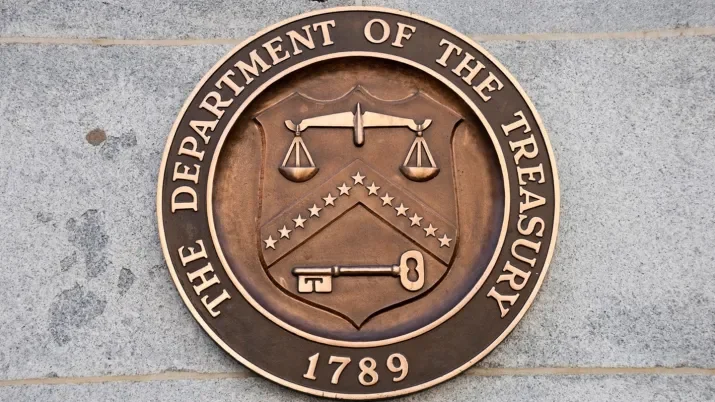The Next Crisis Will Begin…With Clickbait Headlines
There have been a number of recent articles in the mainstream press about the 10 year anniversary of the collapse of Lehman Brothers, with some saying familiar risks are emerging and questioning whether lessons have been learned. In recent weeks, for example, we have read that CLOs are a “ticking time bomb” that could cause a new financial crisis and that securitisations of UK ‘subprime’ mortgages are back, to wreak havoc on a “brittle” financial sector.
One lesson clearly not learned is about the historical performance of the European ABS market, which seems unable to escape the tag of being the instrument that caused the global financial crisis (GFC), despite boasting some of the lowest default rates across the fixed income market.
To recap, the GFC began in the US with poor quality lending to poor quality borrowers – subprime mortgages. These loans were packaged into securities and then sold, where importantly the originators retained no interest in the ongoing performance of those securities. The problem was made worse by excessive leverage as many of these securities were further repackaged into new securities (CDOs). The big banks had material exposure to these bonds, and given the opacity of bank capital levels at the time, this snowballed into a global crisis as banks withdrew liquidity from financial markets, not knowing which of their peer group would be solvent a week later. At this point asset prices across all financial markets were impacted, but it is important to separate this price volatility from whether bonds actually defaulted.
European ABS markets in particular performed exceptionally well. RMBS issued in 2006 and 2007 suffered the worst effects of the subprime crisis, and realised losses on the $900bn of US RMBS issued in those years totalled 11.4%. For European RMBS, on the €473bn issued in 2006 and 2007, realised losses were just 0.02%, and have been 0% for every European RMBS transaction issued in every year before or since.*
Other asset classes performed much worse. For example, 21.2% of all the US high yield issuers with bonds outstanding in 2006 had defaulted five years later. Holders of Greek government bonds suffered a haircut of 53.5% in the debt restructuring of February 2012. It is easy to find examples of high risk or low quality in almost any market, but you have to look at the market as a whole to make fair judgments.
The comparatively low default rates of ABS, particularly in Europe, illustrate that the creditworthiness of these bonds is not properly understood. They, like many other asset classes at the time, suffered not because they were inherently bad or dangerous, but because they were swept up in the correction of asset prices. This dichotomy of quality versus yield persists today.
In addition, there have been developments since 2008 that have strengthened the fundamentals of the market still further:
• Bank capital – Banks have capital to act as a buffer against unexpected losses. Before 2008 banks did not clearly disclose the amount of capital they held, and as the levels were low banks either collapsed or investors questioned their viability as the value of the assets on their balance sheet collapsed. Now regulators require banks to hold significantly higher amounts of capital than they have before. These requirements depend on the type of assets that banks have on their balance sheet, and the relative treatment of ABS in comparison to other bond types has been extremely harsh. In other words, banks hold a lot of capital against their ABS positions, making it unlikely that ABS performance will drive another financial crisis.
• Bank lending – As ABS are backed by loan pools of various types, this is important. Bank regulators have forced banks to adopt more conservative lending standards through changes in underwriting, such as the end of self-certification (allowing borrowers to claim an unproven income level) and restrictions on high loan-to-value lending.
• Bond ratings – The rating agencies, much maligned during the GFC, are now globally regulated with improved controls and have adopted more conservative methodologies. As lower ratings mean a materially higher cost of debt for ABS issuers, they have been forced to structure deals that are lower risk, to conform to these new safer standards.
• Alignment of interest – Regulators have forced the banks and other lenders behind European ABS deals to align themselves with bondholders by retaining a minimum level of risk in each transaction. While this was generally standard practice in Europe before and during the GFC hence the good performance of the deals, unlike those in the US, it is now enforced through European legislation.
• Leverage – Despite the low default rate, European ABS bond prices saw significant volatility throughout the GFC. This was driven by the general panic, but was compounded by the fact that the vast majority of investors at the time (banks, structured investment vehicles, hedge funds) were highly levered – this was not a problem with the bonds, but a problem with how they were used. While there is some leverage in the market today, it is at much lower levels than in 2008. This means if the banking system were to suffer another liquidity crisis, fewer holders of ABS would be forced to sell bonds should they be forced to unwind their leverage, so price volatility is expected to be lower.
We understand the temptation for reporters to highlight activity in products linked to the GFC and claim lessons have not been learned. But the story around ABS is statistically, provably false. Regulators and investors must of course remain vigilant to excessive risk-taking and poor structuring, but the inconvenient reality is that for most of the ABS market, certainly in Europe, there were very few lessons to be learned.
The vast, vast majority of these assets performed exactly as they were meant to, paying coupons on time and returning cash to investors at maturity, however far their prices may have fallen amid the panic and contagion in between. European ABS has been an excellent investment opportunity for the last 10 years and it remains so, even though the changes outlined above have made it even safer for the end investor. They are also an important funding tool for banks lending to the real economy, without which the cost of borrowing for homeowners and consumers would most likely be higher – something that would undoubtedly make headlines in the press!
We hope that sooner or later financial media will alter their narrative, which we believe misleads investors who might otherwise see the asset class for what it is – an effective tool for diversification and capital preservation in fixed income portfolios. In the meantime, those willing to look through the clickbait headlines to the actual risk will continue to benefit.
*Fitch Ratings ‘Structured Finance Losses – Global 2000-2016 Issuance’ (Jul 2017)



